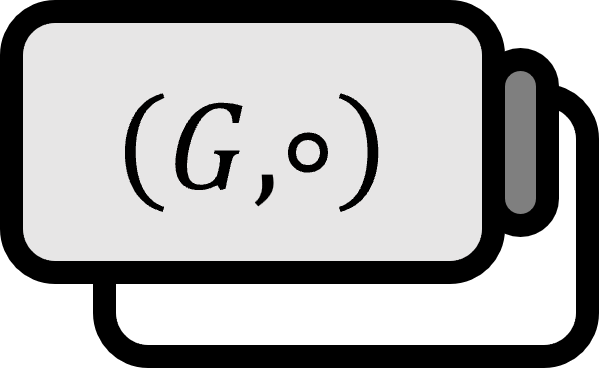Algebraic Methods to Construct the Field of Complex Numbers from the Field of Real Numbers
Theorem 1
$$ \mathbb{R} [x ] / \left< x^2 + 1 \right> \simeq \mathbb{C} $$
Explanation
Considering just the facts, it’s obvious, and the process of creating the complex field from the real field is quite beautiful.
Whether you cut $\mathbb{R} [x ]$ into $\left< x^2 \right>$ or into $\left< x^2 + x \right>$, the shape of the elements will come out in the form of $ax + b$, but there is a reason why it is specifically cut into $\left< x^2 + 1 \right>$. At least once, try to prove it yourself and enjoy this beauty.
Proof
Since $\left( x^2 + 1 \right)$ is a prime element on $F$, $\left< x^2 + 1 \right>$ is a maximal ideal of $\mathbb{R} [ x ]$, and therefore, $\mathbb{R} [x ] / \left< x^2 + 1 \right>$ is a field.
The extension field $\mathbb{R} [x ] / \left< x^2 + 1 \right>$ of $\mathbb{R}$ has elements such as $(ax + b) + \left< x^2 + 1 \right>$, which are cosets. Since all these elements can be represented in terms of $a,b \in \mathbb{R}$ and some $\alpha$ as in $a + b \alpha$, $$ \mathbb{R} [x ] / \left< x^2 + 1 \right> = \mathbb{R} ( \alpha ) $$ is a simple extension field.
Specifically, if we say $\alpha := x + \left< x^2 + 1 \right>$, $$ \begin{align*} & \alpha^2 = \left( x + \left< x^2 + 1 \right> \right)^2 \\ \implies& \alpha^2 + 1 = \left( x^2 + \left< x^2 + 1 \right> \right) + \left( 1 + \left< x^2 + 1 \right> \right) \\ \implies& \alpha^2 + 1 = \left( x^2 + 1 \right) + \left< x^2 + 1 \right> = \left< x^2 + 1 \right> = 0 + \left< x^2 + 1 \right> \end{align*} $$ $\alpha$ is the zero of $\left( x^2 + 1 \right)$, so essentially $\alpha$ acts as the imaginary $i$, and the following holds true. $$ \mathbb{R} ( \alpha ) \simeq \mathbb{C} $$
■
Fraleigh. (2003). A first course in abstract algebra(7th Edition): p272. ↩︎
